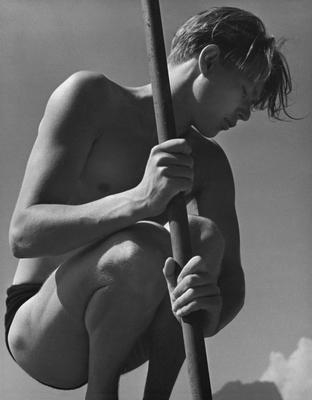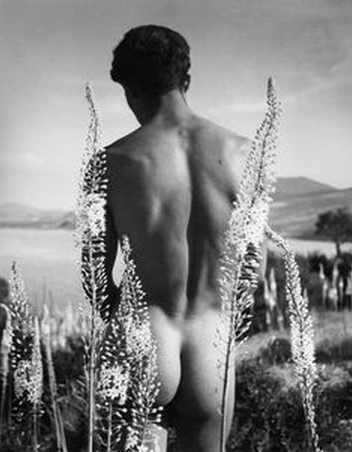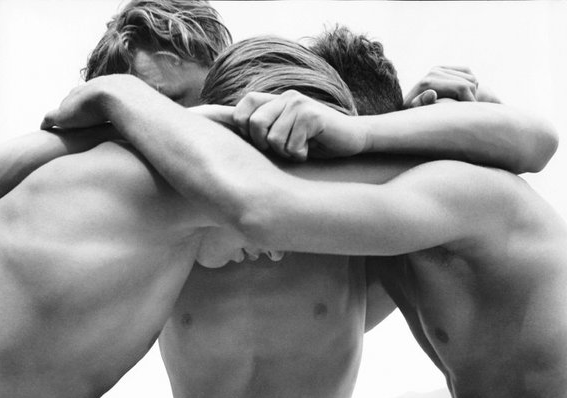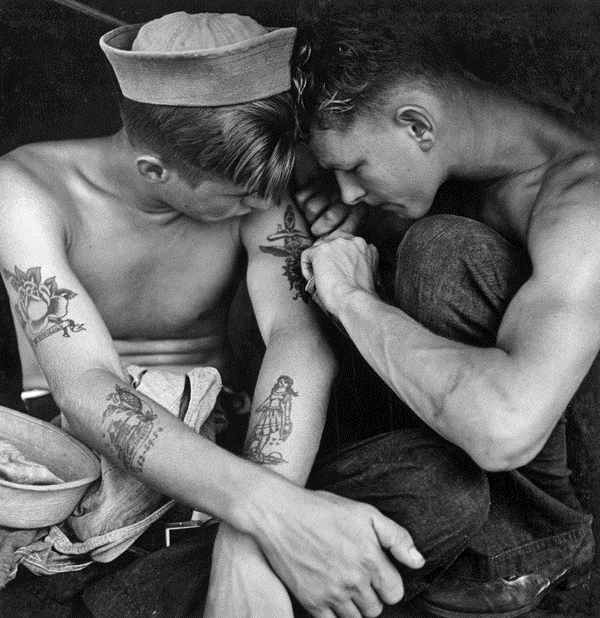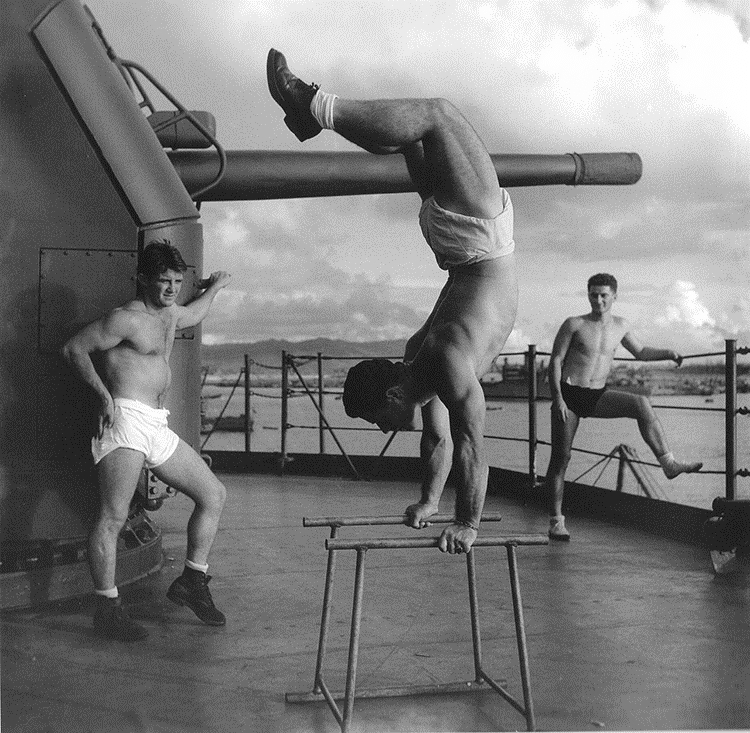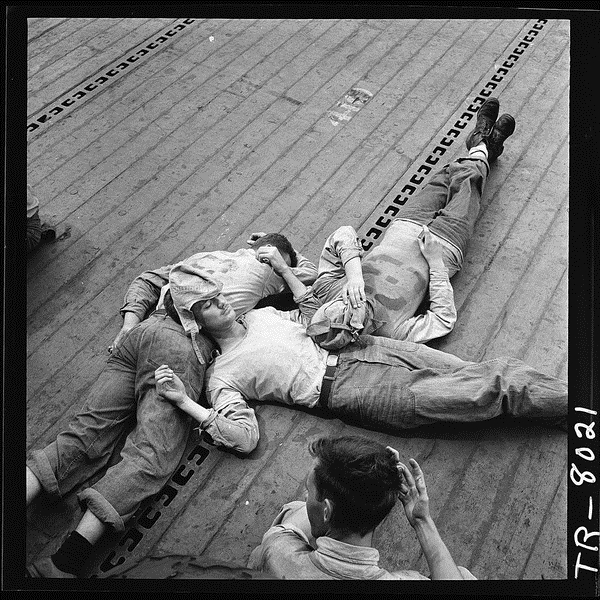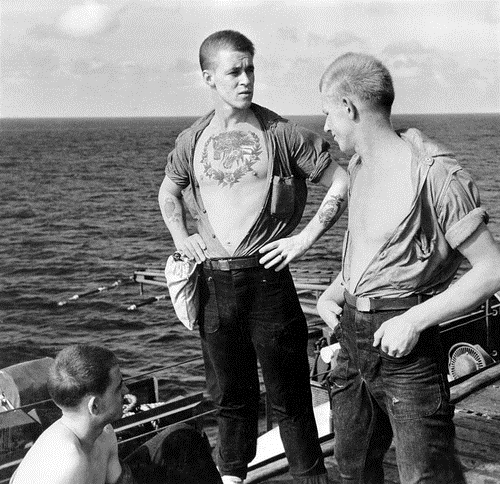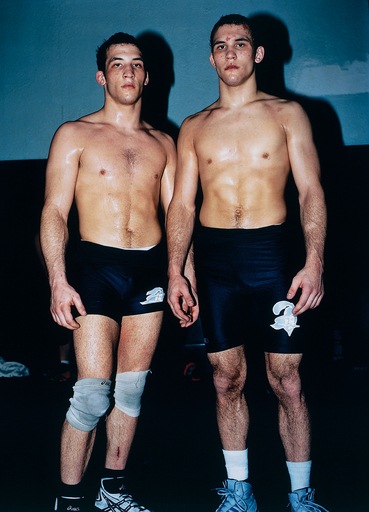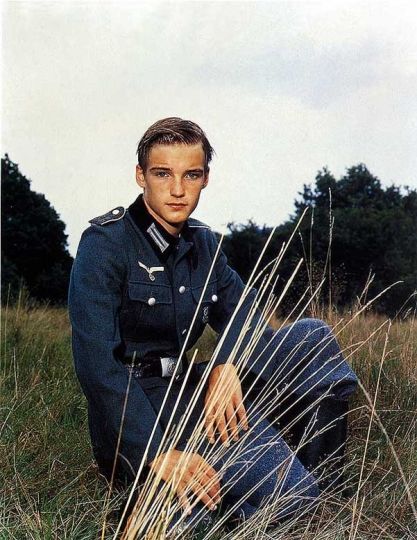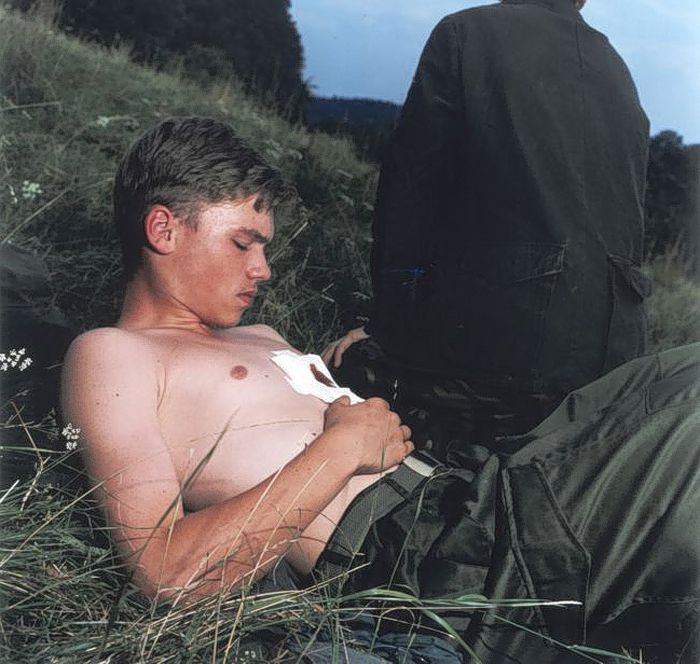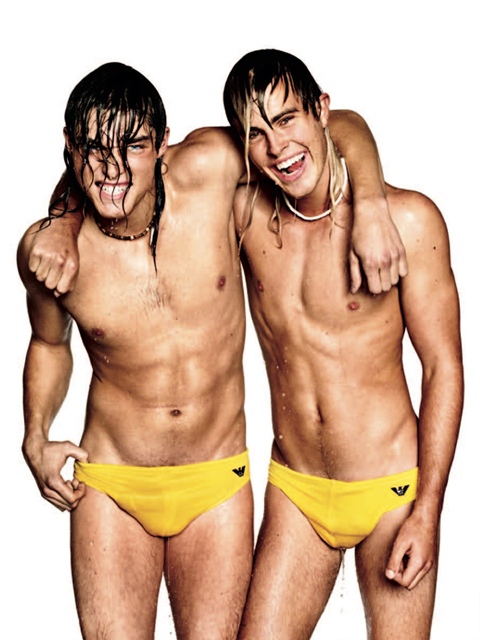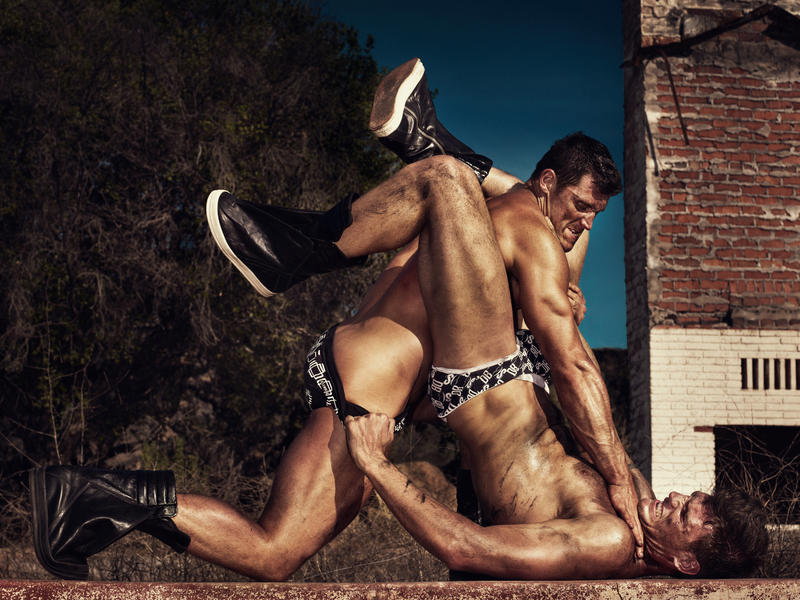Onto bodies and mid-century photo practices this week. I was reading Patricia Vettel-Becker's article Destruction and Delight, and encountered some Edward Steichen and Horace Bristol images looking at US soldiers in the wartime Pacific. The images reminded me of Herbert List's photographs of German youths made around the same time. Generated on opposite sides of the globe and . List's work is an obvious choice when thinking about masculinity and photography in this moment, but I hadn't made this connection to Steichen of all people. Looking at this kind of work I can't help remembering so many of the fashion and advertising projects I worked on in the mid 2000's; in hindsight so much of that work clearly borrows from this earlier history. Mostly I think of Alisdair Mclellan and Matthias Vriens, but of course one can't help thinking of Collier Schorr, too.
Writing about Steichen's Pacific wartime photography Vettel-Becker paints it this way:
"During World War II, the American public was inundated with photographs of war...[which inscribed] four primary motifs: the transformation of boys into warrior men, the fetishization of weaponry, the spectacle of death, and the quest to penetrate and dominate nature. War is a territorial game played by men to enact dominance, a social performance that inscribes gender identities on human bodies. War, like masculinity, is predicated on the subjugation of the feminine, which is encoded in the body and territory of the enemy, an inscription even more extreme when the enemy is of another race. These photographs enact the play of domination and subjugation through the imagery of impenetrability and rapability, thus contributing to the propagandistic construction of the enemy and extending the voyeuristic pleasures of domination to those not able to experience it firsthand."
These four motifs are not consistent across all of the photography of Vriens-McGrath, McLellan, and Shore, but whether in their critique or their re-inscription, this combination of male bodies, violence, domination, and spectacle is worth looking for in contemporary commercial, fashion, and documentary photography. How do these themes echo the legacy of mid-century wartime photography and in what ways does it mirror other gendering processes apparent in mass-culture?
